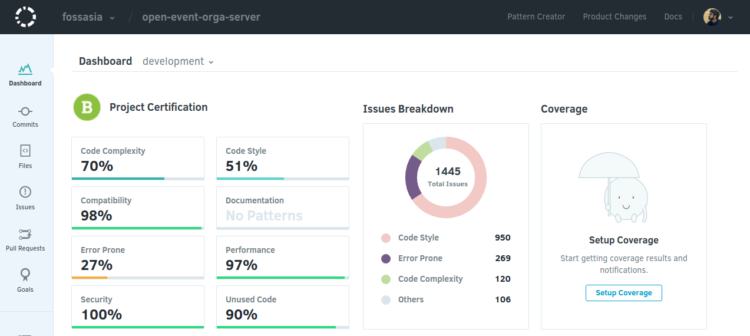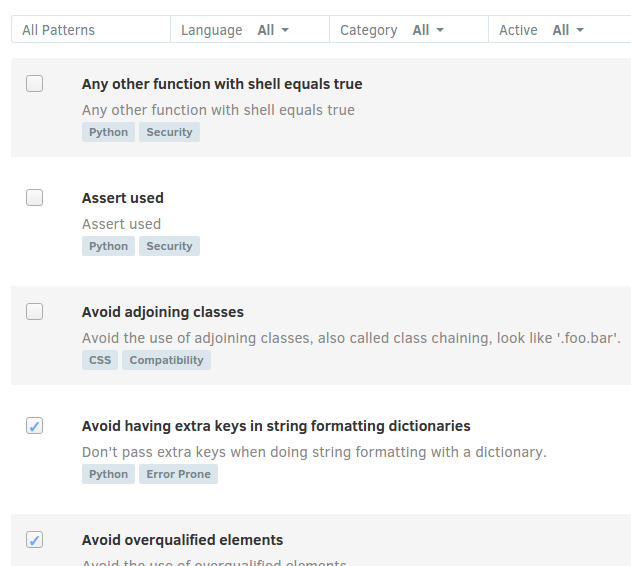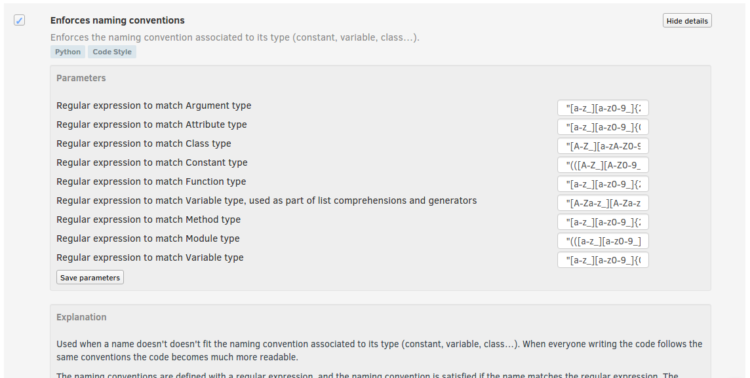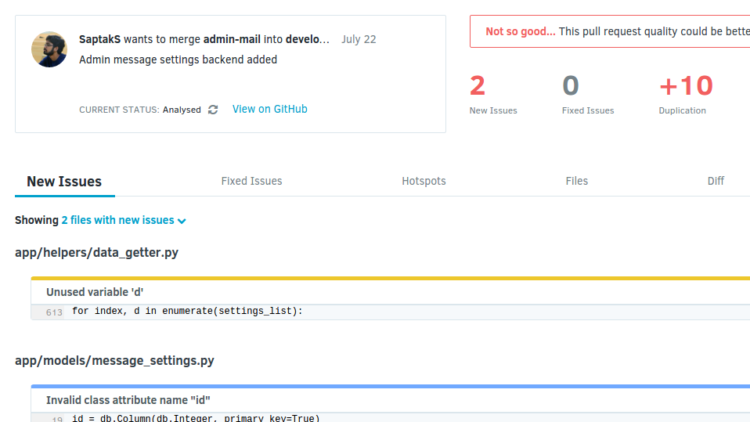Saptak's Blog Posts
What to expect from GSoC?
Posted: 2019-03-10T16:06:00+05:30If you were searching for a post about how to get selected in GSoC, and landed on this blog, you might be a little confused by the blog title. Because, well, this blog isn't about how to get selected in GSoC, or as many have sadly started saying, how to "crack" GSoC. There are plenty of blogs out there addressing that.
And, most importantly, continue being involved in these communities even after GSoC ends. I have told plenty of folks, plenty of times before and I can't emphasise enough that GSoC is just the beginning of your journey. Your journey with open source coding and the communities, doesn't end after the 3 months of GSoC. It starts expanding. Yes, due to various circumstances, you might not always be able to actively contribute code to an open source project, but try to carve out time to help others in communities get started. Try to apply the lessons you learn in the communities, in your office work or university projects and when you do get time, contribute to the open source!
In this blog, I am going to write more about what you should expect from GSoC. And given that the applications for GSoC are about to start, it is high time you get your expectations right if you actually want to get the most out of it.
So let's get started.
Getting selected in GSoC is a gradual process that needs lots of patience and contribution and the slow but steady accrual of experience. So if you are actually reading this blog in an attempt to know how to get selected, you are kind of late in the process. Better late than never, though.
The only way you get selected in GSoC (at least in most organisations) is via Open Source Contributions. So now you might think, okay, open source contribution is the curriculum.
Yes and no.
If you consider open source as yet another chapter in your coursework, then getting started with open source contribution might be difficult.
There's a lot involved; from clean, readable coding to best practices to communication. It is an entirely new way of working (way of life?) that is going to last you forever and help you in the long run.
For many, like us (like me personally), it's more than even that. It's a belief, a principle, a movement. I am going to talk more about that in the points below.
So even though many blogs will tell you exactly how to pick an issue, and show many contributions and help you pick an easy organisation, I’d encourage you to enjoy the process and get involved wholeheartedly in it. Contribute to the project and organisation you feel excited about. Become a part of the organisation, get to know folks, learn as much as you can, expand your pool of knowledge. If after all that, the worst happens and you are not selected for GSoC, you can still keep contributing to a major open source project which is awesome!
GSoC, I believe, is meant to be a platform that helps you get started in your Open Source journey. It is that small little push that you need to start contributing to open source projects. Finding and contributing to an organisation all on your own might be a little difficult, GSoC provides you with a platform that helps you find them more easily and have a higher chance of starting your open source contribution in major organisation than you would normally do.
So use GSoC as a vehicle to begin your journey in the open source world. Once you start seeing it from that perspective, you will, hopefully appreciate the principles of open source and keep contributing to the open source world.
Open source projects appreciate great developers like you, so come be a part of it.
Most times, you will receive plenty of comments and reviews on your pull requests. I have seen many folks get irritated. Many in face, feel that if you can't get a pull request merged without too many reviews, then that organisation is hard to contribute to, in GSoC. This causes many to try for organisations where pull requests get easily merged.
Don't be discouraged by the reviews.
Instead, use them as a learning opportunity. Most reviews are very constructive criticism that are will serve you well throughout your life. It will help you write code that is more readable, more efficient and code that works best in production both in terms of performance and maintainability. In GSoC you get to learn all this directly from upstream projects with super awesome developers and coders … and PR review is where you learn the most.
All these will actually just create a bad impression to the mentors and others in the organisation. It will deprive you of lots of peer learning opportunities because you will always be competing with everyone. So, try your best to collaborate with other participants and even the mentors and other contributors.
Collaboration is a central principle in the Open Source community at large. Collaborating with each other not only helps you learn a lot from your peers but also leads to a better, much cleaner project. Collaborate not only on code, but on shaping the best practices of a project, on blogs, on writing documentation and setting guidelines. You will also have a better overview of the entire project rather than just the small piece you work on.
Remember, GSoC is not a competition where you need to be the top scorer to win. Everyone is a winner if they contribute to the projects and help in growing the project. Believe me, most organisations will pass you even when you don't complete the entire proposal you made, if you made other quality contributions to the project and they feel that your work has helped in furthering development of the overall project.
These will help you network and make friends with a lot of people from different parts of the open source communities and you will get to learn even more. The best part about open source is that it allows you to grow beyond any boundaries and being part of different communities is one of the best ways to do this. Not only will you get to learn a lot code wise, but also about different aspects of life and technology and incidents that might help you shape your future.
1. Don't "Crack" GSoC
Unlike many other computer science and engineering programs, there is no pill that you take and you magically get selected overnight. Nor is there a particular curriculum or book that you can read over and over and practice and get selected.Getting selected in GSoC is a gradual process that needs lots of patience and contribution and the slow but steady accrual of experience. So if you are actually reading this blog in an attempt to know how to get selected, you are kind of late in the process. Better late than never, though.
The only way you get selected in GSoC (at least in most organisations) is via Open Source Contributions. So now you might think, okay, open source contribution is the curriculum.
Yes and no.
If you consider open source as yet another chapter in your coursework, then getting started with open source contribution might be difficult.
There's a lot involved; from clean, readable coding to best practices to communication. It is an entirely new way of working (way of life?) that is going to last you forever and help you in the long run.
For many, like us (like me personally), it's more than even that. It's a belief, a principle, a movement. I am going to talk more about that in the points below.
So even though many blogs will tell you exactly how to pick an issue, and show many contributions and help you pick an easy organisation, I’d encourage you to enjoy the process and get involved wholeheartedly in it. Contribute to the project and organisation you feel excited about. Become a part of the organisation, get to know folks, learn as much as you can, expand your pool of knowledge. If after all that, the worst happens and you are not selected for GSoC, you can still keep contributing to a major open source project which is awesome!
2. Do it for Open Source, Not for Money
I know money is a really important part of life (and I am not denying that) and GSoC money is definitely tempting. So I am not complaining about the money being an intrinsic motivation. What I am trying to say is if you do GSoC only for the money, and stop contributing to Open Source after these 3 months, then the purpose of GSoC is lost.GSoC, I believe, is meant to be a platform that helps you get started in your Open Source journey. It is that small little push that you need to start contributing to open source projects. Finding and contributing to an organisation all on your own might be a little difficult, GSoC provides you with a platform that helps you find them more easily and have a higher chance of starting your open source contribution in major organisation than you would normally do.
So use GSoC as a vehicle to begin your journey in the open source world. Once you start seeing it from that perspective, you will, hopefully appreciate the principles of open source and keep contributing to the open source world.
Open source projects appreciate great developers like you, so come be a part of it.
3. Take PR Reviews Positively
Now, if you have already grasped the previous points, you know GSoC is only the beginning. Apart from making all projects by you open source, a really important part of the journey is contributing to various wonderful open source projects, which is actually going to be most of your GSoC. And with contribution, comes pull requests (or patches in some cases).Most times, you will receive plenty of comments and reviews on your pull requests. I have seen many folks get irritated. Many in face, feel that if you can't get a pull request merged without too many reviews, then that organisation is hard to contribute to, in GSoC. This causes many to try for organisations where pull requests get easily merged.
Don't be discouraged by the reviews.
Instead, use them as a learning opportunity. Most reviews are very constructive criticism that are will serve you well throughout your life. It will help you write code that is more readable, more efficient and code that works best in production both in terms of performance and maintainability. In GSoC you get to learn all this directly from upstream projects with super awesome developers and coders … and PR review is where you learn the most.
4. Collaborate, Don't Compete
Over the years, as both student and mentor in GSoC, I’ve seen participants duking it out for issues or work in organisations and projects. This is mainly because everyone has this feeling that if they solve more issues and bugs, they have a higher chance of getting selected or passing the evaluation. But at the same time, this often causes frustration if a PR is getting too many comments. Also, participants tend to start working on something different, leaving their previous work incomplete.All these will actually just create a bad impression to the mentors and others in the organisation. It will deprive you of lots of peer learning opportunities because you will always be competing with everyone. So, try your best to collaborate with other participants and even the mentors and other contributors.
Collaboration is a central principle in the Open Source community at large. Collaborating with each other not only helps you learn a lot from your peers but also leads to a better, much cleaner project. Collaborate not only on code, but on shaping the best practices of a project, on blogs, on writing documentation and setting guidelines. You will also have a better overview of the entire project rather than just the small piece you work on.
Remember, GSoC is not a competition where you need to be the top scorer to win. Everyone is a winner if they contribute to the projects and help in growing the project. Believe me, most organisations will pass you even when you don't complete the entire proposal you made, if you made other quality contributions to the project and they feel that your work has helped in furthering development of the overall project.
5. Be Part of the Community
While being a part of GSoC, don't just code. Go, be a part of various open source communities. When you are selected for a particular organisation, be always active in their communication channels, be it IRC or slack or gitter or what have you. Help newcomers get started with the project, attend team meetings, make friends, and communicate with everyone. If possible, try to attend different meetups and conferences near your area.These will help you network and make friends with a lot of people from different parts of the open source communities and you will get to learn even more. The best part about open source is that it allows you to grow beyond any boundaries and being part of different communities is one of the best ways to do this. Not only will you get to learn a lot code wise, but also about different aspects of life and technology and incidents that might help you shape your future.
And, most importantly, continue being involved in these communities even after GSoC ends. I have told plenty of folks, plenty of times before and I can't emphasise enough that GSoC is just the beginning of your journey. Your journey with open source coding and the communities, doesn't end after the 3 months of GSoC. It starts expanding. Yes, due to various circumstances, you might not always be able to actively contribute code to an open source project, but try to carve out time to help others in communities get started. Try to apply the lessons you learn in the communities, in your office work or university projects and when you do get time, contribute to the open source!
Configuring Codacy : Use Your Own Conventions
Posted: 2016-07-23T02:12:00+05:30
All the developers agree on at least one thing - writing clean code is necessary. Because as someone anonymous said, always write a code as if the developer who comes after you is a homicidal maniac who knows your address. So, yeah, writing clean code is very important. Codacy helps in code reviewing and code quality monitoring. You can set codacy in any of your github project. It automatically identifies new static analysis issues, code coverage, code duplication and code complexity evolution in every commit and pull request.
To maintain a clean code, codacy is really helpful as it reviews all the pull requests, commits and the entire code for you based on code style, code coverage and other metrics..
But as we all know, a perfect code style is very difficult to determine. What is more important is readability and maintainability of the code rather than following a strict code style rules. There are various lint guides such as csslint, jslint, pylint, PEP-8 which give you a good idea about clean code style but they are guidelines rather than rules. So what is important is whatever convention you follow, you follow throughout the code..
So you may need to make some changes in the codacy configuration to check the codebase according to your organisation's coding conventions rather than a standard lint issue. Unfortunately, there is not very good documentation about this. So, I will share a few common changes I found out myself.
Enable / Disable Checks
Firstly you need to have access for the repository to set up proper checks. Otherwise you can only view the reports. If you have proper write access to the repository in github, you will see 2 additional options in the sidebar -

- Code Pattern - List of all the checks available on codacy to review your code
- Settings - Settings involving github repository url, codacy badge, repository name, etc.
To enable or disable a check, you need to click on code patterns options on sidebar. On clicking you will find a page like this:


Now to add or remove a check, you just need to click the checkbox and the configuration is automatically updated.
To see the checks based on language or category, you can click the dropdowns above to select a particular language or category to get checks related to that. For example, there is a javascript lint issue which says "Enforce ===".

This might not be suitable for your project or maybe your team doesn't follow this convention, so you can ignore this check by clicking on the checkbox.
Modify Checks
Now the biggest confusion or controversial point that we all have while talking about clean code is Naming Conventions. There is always an argument whether to use snake_case or camelCase or PascalCase. Different lints consider different naming conventions to be correct. However it is believed that an entire codebase should follow a single naming convention. So, what to do?
Well there is a way to configure this and all other checks. For example, to change naming convention for python codes, you can filter according to python and code style. The you would find a check "Enforces naming convention". To modify the check, click on the "show details" button which you get on hovering over the rule. On clicking the button, you will see something like this:


As you can see, there are certain regular expressions present corresponding to various identifier names. Now if you know about regular expressions, you can figure out what this regular expressions. Right now, for our project, the regular expression set for variable type is "[a-z_][a-z0-9_]{0,30}$". This regular expression basically means it allows any variable name in snake_case which has a length between 1 and 29. Now you might feel like you want the variable names to be of at least 5 letters. So you can modify it as "[a-z_][a-z0-9_]{4,30}$". Or suppose you want the variable names to start with uppercase letter. So your regular expression should be something like "[A-Z_][a-z0-9_]{0,30}$". You can check your regular expression our with some example names in regexr.com.
After you have modified the regular expression, click on save parameters. This enforces the new regex to be followed the next time codacy reviews your code.
Re-analyze
After modifying the checks, you might want to re-analyze certain pull requests or commits. This won't be done automatically in an old pull request at that very instance. But you can again enforce this. Click on "Pull Requests" in the sidebar. Select the pull request you want to re-analyze. It would look something like this.

Beside the "CURRENT STATUS: Analysed" you can find a recycle button  . Click on this button, and it will start analyzing the pull request according to the new configurations.
. Click on this button, and it will start analyzing the pull request according to the new configurations.